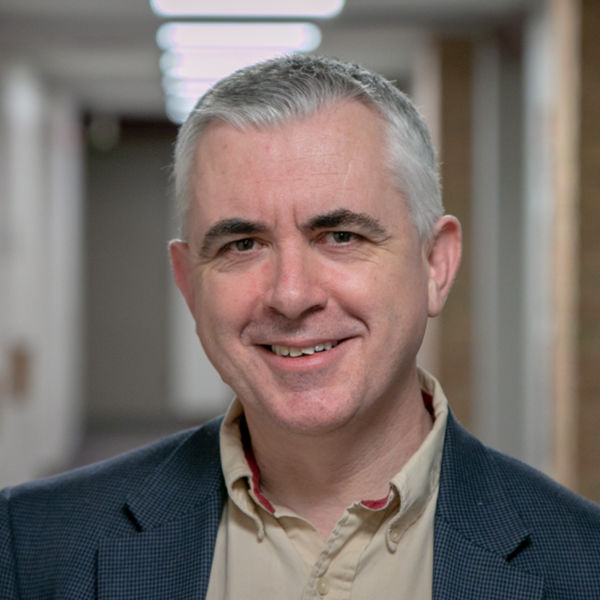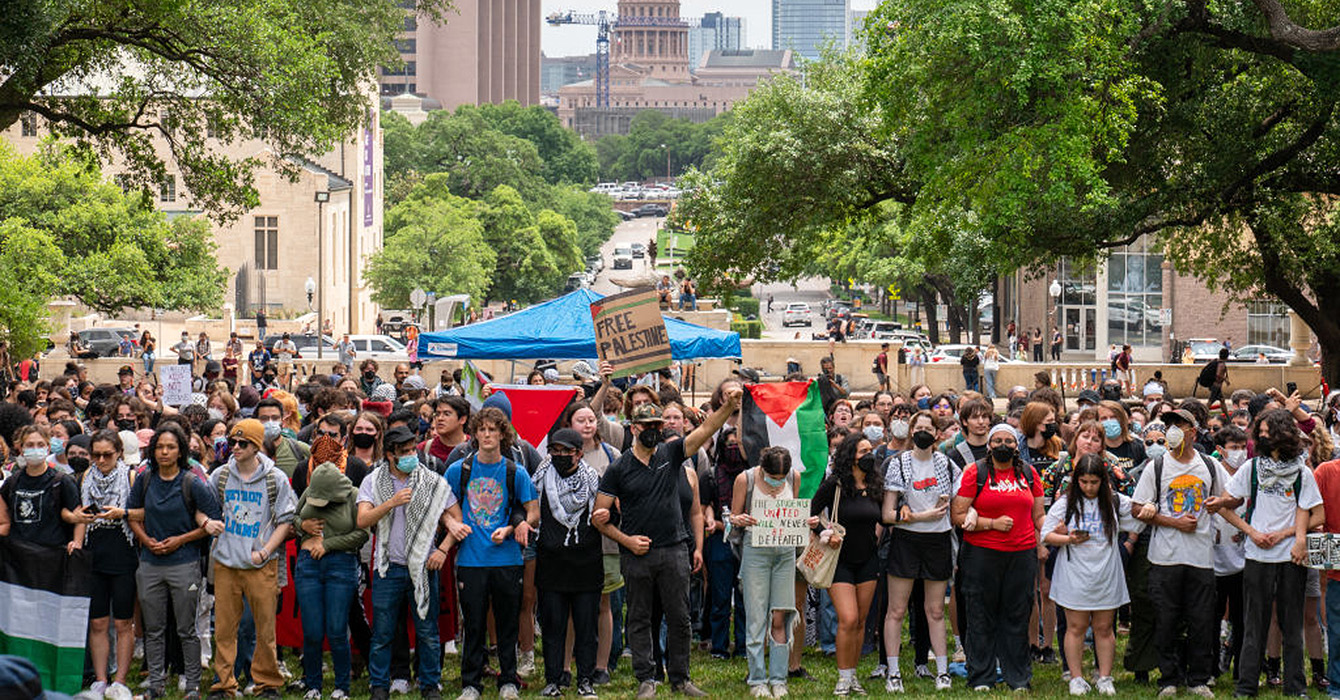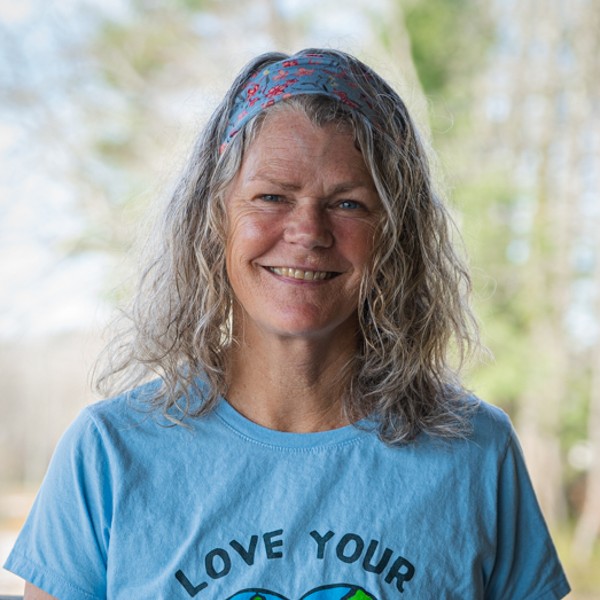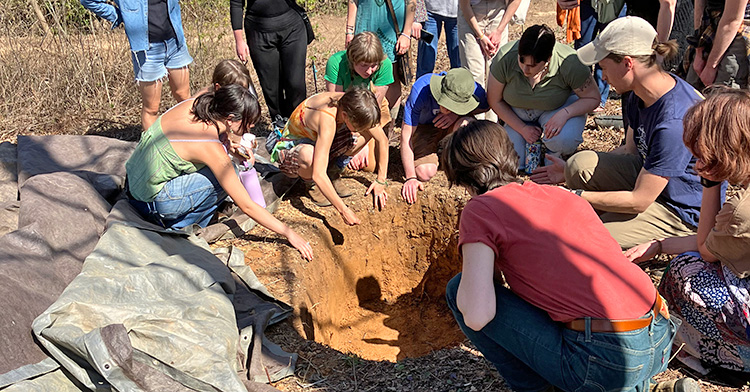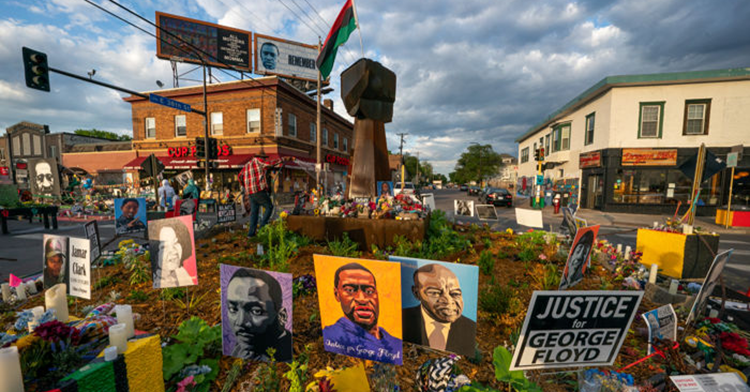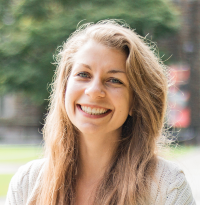In his former work, Eric Lewis Williams literally touched history. Part of his new role is shaping the present while anticipating the future.
The son of parents who moved north to Illinois as part of the Great Migration, Williams served for nearly seven years as curator of religion at the Smithsonian National Museum of African American History and Culture. He became director of the Office of Black Church Studies at Duke Divinity this summer.
Williams believes that his work at the Smithsonian opens an opportunity for people to see theological ideas in more concrete ways.
“I want people to look at these objects and artifacts as windows and to look into these windows and to think about the ways in which our understanding of material culture complicates the ways in which we’ve understood things before,” Williams said. “It helps us to get closer to history and informs the ways we engage the present.”
He spoke with Faith & Leadership’s Micah Edwards and Aleta Payne. The following is an edited transcript.
F&L: What led you to your work at the Smithsonian?
Eric Lewis Williams: While teaching at Harvard University in the Department of African and African American Studies, I learned from a friend that the National Museum of African American History and Culture had launched a search for a curator of religion. Sometime before this, I had learned of the work of Dr. Rex Ellis, the associate director for curatorial affairs at the Smithsonian National Museum of African American History and Culture.
Rex Ellis was a pastor and museum educator. Before his time at the Smithsonian, Ellis served at Colonial Williamsburg, a living history museum, doing the work of a museum intellectual. Ellis also held deep interests in religion, and I was so intrigued by this that I began to pull together the things that he had written.
I didn’t grow up going to museums. I grew up in Rockford, Illinois. We didn’t have many museums. We definitely didn’t have any museums that dealt with African American culture.
But when I learned of Ellis’ work and saw the kinds of questions that he was able to raise with objects, and how material culture actually provided windows into understanding African American history and African American religious life, I became quite intrigued.
Upon learning that they would hire a curator of religion at the African American Museum, I quickly gestured toward the possibility. I was very grateful that it happened for me, and the experience would prove to be quite broadening.
In the study of religion, we deal a lot with theories. We deal a lot with ideas. We deal a lot with sacred texts. But at the museum, we were dealing with artifacts such as windows and doorknobs and articles of clothing and hymnals — all of this religious stuff. All of this matter. And all of this had so much to teach us about religious life and the ways in which communities have practiced their faith traditions.
One of my favorite artifacts there was a hymnal that belonged to Harriet Tubman. From everything we understand about Harriet Tubman, she was not able to read, so why in the world would a person who couldn’t read own her own hymnal?
Those kinds of questions intrigued me, and it provided another dimension to my scholarship and a depth to my understanding of history, because artifacts bring us closer, so much closer to the history.
F&L: We are in a moment when history is being distorted and denied. What is the significance of accuracy in telling?
ELW: As a museum curator, I thought of my work as that of a cultural custodian. That these objects — they were sacred. That the artifacts pointed to these real human beings who lived in very complicated times in American history and that their stories were often rendered invisible. Their voices were rendered inaudible. They were often rendered nameless.
[For] these people that had been rendered invisible, now I had another opportunity to speak into the places where they could not speak, to lift up their stories, to give their testimonies — a chance to let them inform the ways in which we engage the present. That was really kind of a sacred work.
It’s very important that we take history seriously. [Theodor] Adorno says that it is a condition of truth to allow suffering to speak. That was an opportunity to allow those from the underside to speak and to weigh in on the terror of history and the indomitable hope that they nurtured and that they carried, this idea that death, terror, that existential disrespect, does not have to have the final word. That is how I understood that work.
It was Vincent Harding, the American historian, who said that African American history is a history that is written through tears, and that history must be told. Those perspectives that they had on theology, the theological visions that carried them through the dark night of oppression — that we need to reclaim and excavate some of those traditions, because we’re passing through some dark times now.
I think that the enslaved Africans have something to teach us about holding on just a little while longer. I think of that song, “Hold on just a little while longer. Everything will be all right.” We need a theological vision today that will help us to hold on a little while longer.
F&L: There’s a sermon in there.
ELW: Yes, there is.
F&L: You are a co-editor of “T&T Clark Handbook of African American Theology.” Can you tell us about that?
ELW: The handbook was an attempt to gather contributions on various aspects of African American theology from a variety of perspectives. We wanted to expand the theological conversation beyond modern Black theology to look at other aspects and trajectories of African American theologizing. This handbook was interdenominational. It was historical. It was ecumenical. It was contextual.
The book was divided into four parts. Part 1 was historical investigations, where we looked at various historical foundations. Part 2 was theological method and construction; here attention was given to issues of doctrine and other theological sources. Part 3 dealt with various aspects of the church, ministry and leadership. And then Part 4 sought to lift up various attempts at structured theological dialogues.
We examined the ways in which African American theology has been in dialogue with other traditions like feminist and womanist traditions, Jewish theology, Caribbean theologies, and Native American theology.
It’s a very thick book, but it covers a lot of ground, and it’s had a wonderful reception, especially within classrooms.
F&L: I’m curious — what did you learn from it?
ELW: It was reinforcement that African American theology is not monolithic — that it’s broad and that people enter into conversation at different social and theological locations. In choosing different interlocutors as their dialogue partners, the diversity, beauty and breadth of African American religious thought are most clearly revealed.
F&L: What led you to Duke and the Office of Black Church Studies?
ELW: I’m a graduate of Duke, actually — the Divinity School. I was a student at McCormick Theological Seminary in Chicago, and one of my professors, because of some interests that I held, told me, “I have a friend down at Duke who writes in this area.” His name was Dr. William Clair Turner Jr., and so as a first-year seminarian, I would go through microfilm and I would pull up his articles. I was so intrigued by his perspectives.
I was raised within the Pentecostal tradition. When I got to seminary, I wanted to learn as much as I could about my own tradition. Dr. Turner had also been raised in the Pentecostal tradition, and he had studied theology, sociology of religion and the history of religions. Turner’s theological thinking danced with these three distinct disciplines in very interesting ways, and he used the language of phenomenology to talk about Black religious experience as he reflected on both Pentecostalism and African American Christianity. It was very different from the things that I had been reading, so I decided to give him a call.
I applied, got accepted, and I came to Duke and studied with Turner. Though I came to study with Dr. Turner, I was exposed to so many other amazing professors, like Grant Wacker, who taught American Christianity, Geoffrey Wainwright, who taught ecumenical theology, and J. Kameron Carter, who taught modern Black theology and Black church studies.
I went on and completed my doctoral studies [at the University of Edinburgh]. I would tell people sometimes, “I would love one day to return to teach at the Divinity School.” People remind me now that I’m here. They tell me, “Eric, you said that’s where you wanted to teach. Look what the Lord has done.”
It is one of the great honors of my life to be here. It became a very important fountain of my spirituality, a very important strength of my spiritual, intellectual and ministerial development.
To participate in this enterprise for the sake of other students preparing to serve the church, and to be able to serve the Office of Black Church Studies, to be here in this ecumenical capacity and to be able to create transformative theological learning opportunities, to be able to teach and to learn with people from different denominational traditions, I find both exciting and life-giving. I’m very grateful to be here and to journey into this new vocational moment.
F&L: What is something you hope to bring from your work at the Smithsonian?
ELW: The possibilities of material culture for teaching and learning, for understanding theology, understanding history, different ways of interrogating history, different dialogue partners from other disciplines within the human sciences. A deeper understanding of history and even a deeper understanding of the terrors of history.
I would love to teach a course on religion and material culture. In fact, I would someday like to write a text based on my work. I think I would call this text: “Handling Holy Things: A Material Culture of Black Religion.”
It would bring together my insights from the study of religion and my perspectives from the study of material culture and history and would explore the possibilities of material culture for understanding and teaching Black religious experience. These are both topics I look forward to exploring further. That being said, the opportunity to teach a course on African American religion and material culture would be a complete joy.
F&L: Studies show that 47% of African Americans attend church weekly. What are ways that you think churches might engage people?
ELW: I think that one of the things the church could engage itself in, similar to what happened in the wake of the experience of Pentecost, [is to] spill over into the streets and to consider new modes of being, new modes of service, new modes of presence, new ways of being present, new ways of reaching out to people who suffer.
Exploring the worlds of possibilities that technology provides us, ways of creating programs for young people in cities that won’t necessarily have to be church-based but could be community-based.
While the church must remain a sanctuary, it can also become a stage, a place where gifts and talents are called forth. It can also be a stoop, a place where people from the community come, sit around, where people can come simply to be together. The church can also be a schoolhouse, a place where people come for deeply transformative educational experiences.
The church could also benefit from thinking about the work that we do in the world in new ways. Here I make reference to ideas for revitalization that the laity bring. I’m not talking about theorists and scholars of religion, pastors and bishops, but ordinary people — young people, old people, people having recently graduated from college.
I think we should bring the laity in the room to weigh in on the current decline. And when the microphones are turned on let’s just talk about what we can do, how we can lay hands on the culture in ways that heal, in ways that restore, in ways that empower.
I think that is one of the gifts of theological imagination. That of seeing the world anew.
F&L: What have we not asked?
ELW: Maybe I should say a word about the worlds that produced me. I was born in Rockford, Illinois. My father was from Mississippi, and my mother was from Arkansas. My father left Mississippi the year after Emmett Till was killed.
We talk about the Great Migration with respect to the many opportunities available to Black people in the North, southern Blacks were often fleeing from the terror of the South. Many parents taking their children out of the South because they knew that their children wouldn’t be OK with someone disrespecting them and not saying anything.
In Mississippi during that time (my father was born in 1930), Blacks could be killed for what they called “reckless eyeballing” — looking at the wrong person the wrong way, or someone accusing you of looking at their daughter or looking at their wife.
My father would tell us that when he grew up, when a white person would pass on the sidewalk, he would have to stand off the sidewalk and let them pass, and he would have to look down.
Upon migrating, he relocated to Chicago with his older siblings, and he ended up settling in Rockford. But while in Mississippi, he had a dramatic kind of conversion experience, and the woman who led him to faith was a member of what they called then the Sanctified Church, which later he realized was the Church of God in Christ.
He raised his children in the Church of God in Christ in Illinois. He connected with the same church when he got there. In fact, that was how they often settled; they would come from one church and they would connect with the [same] church in the North, and it was there that they made all the other connections. I tell people, using the words of Zora Neale Hurston, that I was born with God in my house.
Because of my father’s conversion and his embrace of his new religious experience, this informed the way he engaged the world. I think that has a lot to do with my own kind of curiosity about religion. I saw the way that it informed my father’s mode of being in the world.
I think that’s one of the things that got me going, religiously speaking. And then, of course, going to school and going to college and meeting people who thought very differently about things, and to begin to love that and begin to want to actually hear other perspectives. That was really powerful for me, and it still is.
That’s why I love the classroom. When the conditions are right, [when] people feel that they can speak and that they can share and are not intimidated about sharing, amazing things can happen. As a theological educator, I desire to create and sustain these kinds of environments.


